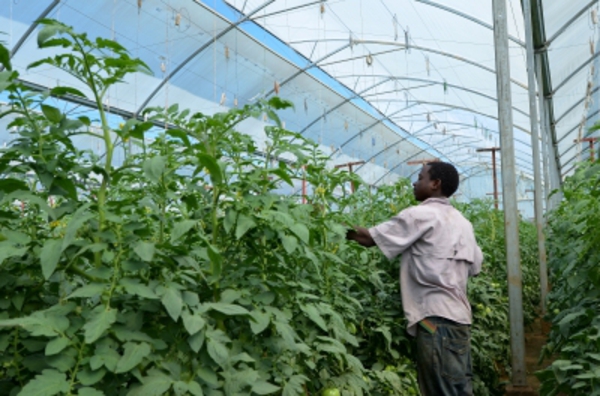The primary function of a greenhouse is to protect plants from intense heat and cold. Gardeners are aware of the importance of providing just the right temperature in order to encourage plant life to flourish and bloom. But apart from protection from the elements, greenhouses offer several other benefits.
-
Greenhouses protect plants from a variety of garden pests.
Plants should not only be protected from extreme outdoor conditions, but from harmful insects as well. Millipedes can easily devour a cluster of seedlings; while beetles, caterpillars and other pests not only eat leaves, but these creatures can also bring fungus and other diseases that can destroy plants. When you have a greenhouse, you can easily control what sorts of living things are brought into the area. Because there’s a border, it will also be much simpler for you to check pest infestations and make sure that these are contained.
-
Greenhouses can also serve as storage area for garden tools.
Gardeners are often troubled about where to store their gardening tools. If you have a greenhouse, you can use this to keep delicate plants and you can also store all of your equipment there. When it’s time to plant something, it will be more convenient for you as all of the things that you need are within your reach. So, instead of having tools out in the backyard and exposed to the elements that can hasten deterioration, you’ll have ample space for both your plants and tools.
-
Greenhouses offer people many opportunities to grow their own fruits and vegetables.
Organic fruits and vegetables are often limited in supply and quite costly too. If you have a greenhouse, you’ll be able to grow lettuce, onions, tomatoes and other veggies and fruits that you love. When growing plants, you also won’t have to wait for the right season because the greenhouse will provide just the right environment for this.
If you want to build a greenhouse, you don’t have to start from scratch. An old and idle carport can be readily transformed into a hothouse. This may be a challenge, but there are ways to simplify the construction process. Most of all, you’ll be able to save money as you won’t have to build an expensive glasshouse or a brand new greenhouse. Here are some tips.
1. Preparation
Select the area where you want to construct the greenhouse. Make sure that the floor area can easily accommodate the size of the used carport. If not, you can also just utilize certain parts of the carport to create a smaller greenhouse. You can use the carport’s old metal or wood frames, for instance. Then, check the entire carport for loose screws or nails, rusty surface, rotten wood, splinters and other sharp projections that can cut or damage plastic covering. After checking, make sure to smooth or sand surfaces using sandpaper.
2. Selecting a Greenhouse Covering
There are several kinds of coverings that you can use for your greenhouse. Two common types are polycarbonate panels and the polyethylene film. Polycarbonate covers are popular because these are very durable and offer better insulation, particularly those with twin or double walls. These are clear and appear almost glass-like. Because they are very transparent, they can let in a lot of sun that your plants need. Polyethylene films are also apt choices. These are available in various thickness and some have UV protection. Double layers provide better insulation.
3. Covering the Carport Frame
Use batten tape and nails to attach each layer of covering. Plastic covers should not be overly stretched as this can cause covers to rip easily. It’s also best to attach covers in the morning when it’s not yet too hot. The reason for this is that heat makes plastic stretch more. If you put a cover when the sun’s really hot, you could easily pull this without realizing how tight it already is.
Citations:
- FreeDigitalPhotos.net
Claire Mosby is a freelance writer who regularly blogs about carport uses, construction and maintenance. She writes for Carports Arkansas and other known manufacturers, such as Coast to Coast Carports, Inc.

